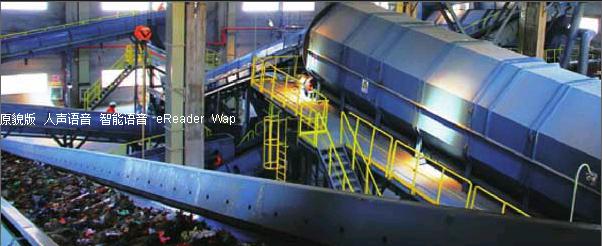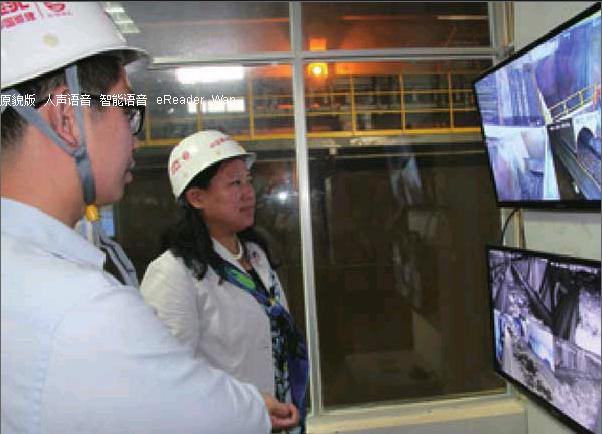Pouring Green Cement
2016-12-21ByLiNan
By+Li+Nan


‘We have transformed our cement factory from one which used to be highly polluting to one which is now environmentally friendly,” said Nie Kai, President of China Gezhouba Group Corp. (CGGC), one of Chinas top five contractors, headquartered in Wuhan, central Chinas Hubei Province.
Nie was referring to CGGC Cement Co. Ltd.—a wholly owned subsidiary of CGGC and the largest special cement producer in China.
Nonetheless, Chinas cement sector is suffering from overcapacity, and more than 40 percent of the industry is operating under anemic profit levels. In the first half of this year, profits from the cement industry totaled 9.55 billion yuan ($1.41 billion), down 26.6 percent year on year, according to the latest data released by Chinas National Bureau of Statistics.
However, CGGC Cement goes against the current—in the first half of this year, it generated revenue of 2.78 billion yuan ($410.33 million), increasing 1.35 percent year on year. Furthermore, its profits amounted to 405 million yuan ($59.78 million), rising 0.67 percent year on year.
CGGC Cements growth lies in its shift to environmental protection and reforms of its business practices.
Starting in 2013, the company has undertaken a transformation and upgrading campaign, closing down outdated plants and developing its waste management ability. Using waste-to-energy technologies that use household garbage to make cement and steel slag for highways, the company has become more energy-efficient and environment-friendly.
According to Guo Chengzhou, Deputy General Manager of CGGC, energy-hungry and high-polluting cement kilns can be transformed into incinerators. They could then be used as a waste treatment system converting household garbage into heat or raw materials.
From waste to energy
Population numbers in top Chinese cities have boomed due to urbanization—and municipal waste has grown in tandem. Approximately two thirds of Chinese cities are being surrounded by garbage. Piles of junk take up an area of over 500 million square meters throughout the country, causing an economic loss of 30 billion yuan ($4.43 billion) per year, according to data released at the First China Sciences Group Environmental Protection Forum held by the Chinese Academy of Sciences in May 2014.
Whats worse, most cities rely heavily on land-filling or old-style incineration practices to handle waste, which may result in further pollution. Landfills not only take up vast amounts of land, but also contaminate the soil and underground water. And traditional incinerators do not include a mechanism to separate waste materials and remove hazardous materials before combustion.
But using cement kilns to process household waste into alternative fuel does not harm the environment as much as their conventional counterparts.
A material separation workshop has been added to the companys existing cement kilns, wherein waste can be categorized into combustible and noncombustible objects. Combustible waste, including paper, textiles, and plastics can be used to generate heat to process cement. While noncombustible objects, such as dust, glass, and bricks can be crushed to be raw materials used to make cement. Other recyclable solid waste can be sold.
“Compared with traditional waste management technologies, using cement kilns to process waste into alternative fuels is simple, cheap and energy-efficient,” Cai Zheng, General Manager of the Gezhouba Sinoma Jiexin Technology Co. Ltd. (GSJT), told Beijing Review.
GSJT is a Wuhan-based waste management company jointly set up in 2014 by CGGC Cement and Sinoma International Engineering Co. Ltd., a Chinese cement engineering system provider. It aims to turn all of CGGC Cements kilns into waste-to-energy facilities, which can then be used to process municipal waste into alternative fuel.
In September 2015, the first upgraded cement production and waste management line was put into operation in Laohekou City, Hubei Province. The system can process 500 tons of garbage per day and had treated 70,200 tons of municipal waste by August 2016, helping clean up the city and protect the local environment, according to CGGC Cement.
In addition, burning waste to generate heat can save energy and reduce carbon emissions. CGGC Cement claims that compared to traditional kilns, the Laohekou cement production and waste management system can save 10,800 tons of coal, 346,000 kilowatts of electricity and 6,075 tons of raw materials and cut carbon emissions by 42,000 tons.
CGGC Cement plans to build three such systems in Hubei Province, which are expected to commence production in 2017.
Overall reshuffle
These moves are part of CGGCs efforts to reform its growth drivers as overcapacity caps most of its businesses. Through restructuring, mergers and acquisitions, as well as opening new businesses, the construction bloc has recently taken a considerable part of the environmental protection sector in China.
CGGC now has four arms doing business in the environmental sector in waste management, contaminated soil and sludge cleanup, steel slag recycling, as well as water and ecosystem improvement.
In November 2013, CGGC set up Chinas first and only company capable of processing 300,000 tons of steel slag into paving materials per year. Its steel slag production has been used in many sections of express- way in China.
At the beginning of 2015, CGGC snapped up a 75-percent stake in the Israel-based water treatment company Kardan Water, which can treat 525,000 tons of water per day. CGGC has also inked a series of water-related deals with local governments including Hubei, Sichuan, Jiangsu and Hainan provinces.
According to Nie, revenue from CGGCs environmental protection arms now accounts for 7.97 percent of its total income.
“CGGC will never be an environmental protection company that lives on government subsidies. We move into the market with technological innovation, synergistic development as well as our capability in investment and financing,” Nie told Beijing Review.
Hurdles ahead
“Green development is the trend now. But there is huge demand in Chinas environmental industry which is inadequately met. CGGC has moved into the market and has found a new growth driver,” wrote Dong Dengxin, Director of the Finance and Securities Institute at Wuhan University of Science and Technology, in the Wuhan-based Hubei Daily.
However, some obstacles remain in CGGCs path. Guo Yun, a researcher with the Beijing Center for Value Measurement, told Beijing Review that a shortage of environmental protection experts may be a major bottleneck. As a state-owned contractor, CGGC has an ample pool of architects, but few environmental protection workers. CGGC should not only recruit more environmental protection experts, but also train its senior managers to adapt to the new team.
Limited market access may be another problem for CGGC, said Guo. As one of Chinas seven strategic emerging industries, the environmental protection sector is at a nascent stage of development with limited market access and many operational risks. Therefore, governmental support is needed to streamline the market access mechanism and improve industrial standards, making it easier for newcomers like CGGC to enter the sector.
Finally, financing could be a headache for CGGC, said Guo.
An emerging industry poses both opportunities and risks. CGGC should take full advantage of existing capital markets and policies to diversify its financing channels. Public-private partnership projects may be a good option, said Guo.
